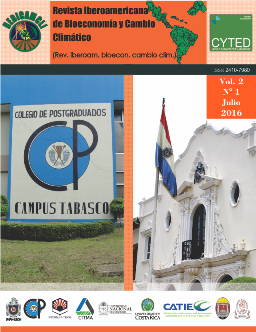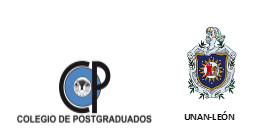Potential impact of climate change on the bees
DOI:
https://doi.org/10.5377/ribcc.v2i1.5673Keywords:
Bees, Climate change impacts, Beekeeping riskAbstract
Climate change is the greatest challenge for humanity in the twenty-first century, projecting potential social, economic and ecological conditions globally; It is making it necessary to consider adaptation and mitigation strategies in the primary sector activities to reduce the risk to those changes. So the aim of this review was to analyze the research on the effects of climate change on beekeeping from two of its basic elements: the physical and biological relationships and socio-economic risks. Potential impacts were classified into direct consideration intra- and inter-specific response of flora and honey bees; and indirect, focused on the socio-economic damages. It was found that the effects of direct order lead to intra-specific plant species such as temporary space mobility towards higher latitudes and population dynamics of bee colonies answers. Indirect changes include an economic and social sense for risk profitability as a result of the increase in adaptation practices, leading consequently to a possible abandonment of the activity. Concluding the obvious need for comprehensive regional and interdisciplinary work that contribute to provide the biological response of the species involved in the activity (from the quantitative paradigm) and understanding of the phenomenon (from the qualitative paradigm), due to the uncertainty of beekeepers who, under his own scheme of cognitions they decide to invest or not in management practices that help maintain production.
Downloads
4165
HTML (Español (España)) 0
Published
How to Cite
License
Copyright (c) 2016 Rev. iberoam. bioecon. cambio clim.

This work is licensed under a Creative Commons Attribution-NonCommercial-ShareAlike 4.0 International License.
Copyright © Rev. iberoam. bioecon. climate change (Graduate School and UNAN-León, School of Agricultural and Veterinary Sciences / Department of Agroecology / Center for Research in Bioeconomy and Climate Cahnge (CRByCC).







